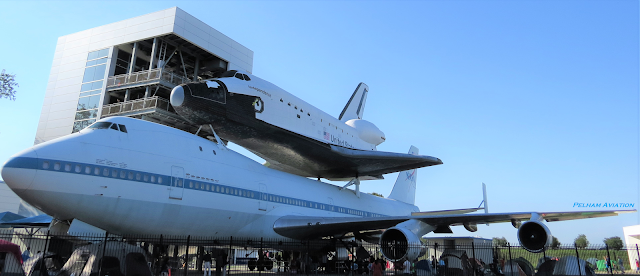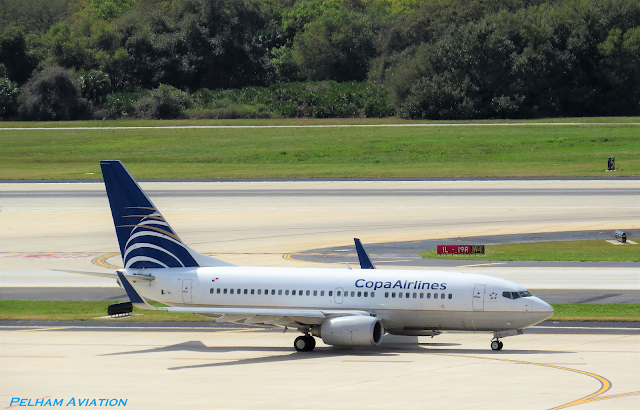Tampa Bay to Houston
ROUTE
ANALYSIS: Tampa Bay to Houston
April
19, 2019
By:
Michael Gutta
Following a trip from Tampa Bay to Houston, I
decided to explore the USDOT T100 data available for this sector. I considered all
commercial flights between St. Pete-Clearwater (PIE) and Tampa (TPA) to both
George Bush Intercontinental (IAH) and William P. Hobby (HOU) during the year
2017, the last full year of published data. For this year, there were no scheduled
flights from St. Petersburg-Clearwater (PIE) to the Houston airports. The
primary carrier at PIE, Allegiant Air, actually has no presence in the Houston
market (either HOU or IAH). I also only looked at commercial passenger
carriers, so the cargo numbers reported are only for belly cargo, not scheduled
cargo carriers. This study was unsurprisingly dominated by the primary carriers
at Hobby (Southwest) and George Bush (United), but I wanted to see who seems to
be leading on this route, and how much of a contribution the ULCC carrier
Spirit has made on this city pair.
 |
| Shuttle Carrier Aircraft NASA 905 (N905NA) with Independence shuttle replica at Johnson Space Center exhibit on 4/13/2019 (Michael Gutta) |
To begin, I looked at the total market of this
city pair. The grand total departing passengers bound for either Houston
airport reached nearly 400,000 for 2017, meaning approximately 800,000 traveled
both ways on this city pair. There were over 3000 one-way departures, and over
1.1 million pounds of belly cargo and mail carried from Tampa to Houston. In
separating the two Houston airports, roughly one-third of all departures,
seats, and passengers from Tampa were destined for Hobby (HOU) with the rest
headed to George Bush (IAH). With Southwest being the only carrier on this
route pair serving HOU, that likewise means that Southwest had a 34% market
share.
In 2017, this city pair was technically served by
five airlines: United, Southwest, Spirit, Mesa, and Republic. However, Mesa
Airlines and Republic Airline conducted a very small number of flights and
would have operated these flights as United Express. Even so, I choose to
segregate these as separate airlines. The leading carrier on this city pair was
indeed United Airlines, capturing 53% of all passengers for an annual one-way
total of 211,000 passengers. Southwest Airlines was second, with 133,000
one-way passengers and 34% market share, and in third place was Spirit Airlines
with 49,000 one-way passengers and only 12% market share. The fourth and fifth
carriers on this route were Mesa Airlines and Republic Airline, combining for
4,200 passengers and a 1% market share.
The third objective of this research was to
review the load factor for each carrier in this market. The two regional
airlines finished first and second, though they also had the smallest aircraft
to fill and carried a minute number of passengers. For the third and fourth
spots, United and Southwest tied at a dead-even 82.4% load factor. Finally, as
in my study of the Tampa Bay to Washington DC market, Spirit Airlines finished last
for filling planes with a not-even-close 70.6% load factor.
The fourth and final component I wanted to
explore was the aircraft type used by each carrier counted by departure. There was
a total of 9 different commercial passenger aircraft types flown from Tampa to
the two Houston airports in 2017. Starting with the regional airlines, Mesa and
Republic deployed the Embraer ERJ-170 and ERJ-175. Spirit with their all-Airbus
fleet flew the route 63% of the time with an A320 and 37% of the time with an
A321. Southwest Airlines with their all-Boeing 737 fleet choose to send the
737-300 on 18% of flights, the 737-700 on 46% of flights, and the 737-800 on
the remaining 37%. Last but not least, United flew five aircraft types. These
were all narrow body aircraft, led by the Boeing 737-900 which flew 37% of
United’s flights. The 737-800 and the A320 nearly tied at 29% and 28% of
United’s flights. Finally, the A319 had 4% of departures and the 737-700 had
only 2%.
For the Tampa to Houston city pair, the dominant
carriers of Southwest and United were predictable, but I wanted to see who led
the way. The data showed that United transported far more passengers and had an
equal load factor with Southwest. The data also showed that Spirit trailed in
market share and load factor by significant margins. Really one of the only
surprises of this study was that United Express flew this route between major
US cities instead of United mainline, capturing about 1% of passengers. For the
number of daily departures, United averaged 4.3, Southwest averaged 3, and
Spirit averaged 1 over the course of 2017.
 |
| United B737-800 (N87531) after landing on runway 19R at TPA on 2/23/2019 (Michael Gutta) |
Moving forward, it’s hard to foresee any new
carriers entering this city pair. Frontier has a miniscule presence at IAH,
while JetBlue likewise has a tiny operation at HOU. Adding a service to Tampa
from either of these carriers would not likely be the next growth step. As
previously stated, Allegiant Air has no presence at either airport in Houston,
though if they did add service in Houston, St. Pete-Clearwater has been one of
their strongholds along with Orlando-Sanford, Las Vegas, and Phoenix-Mesa.
 |
| Spirit A320 (N623NK) touching down on runway 19R at TPA on 2/23/2019 (Michael Gutta) |
As far as changes in aircraft type, Southwest has
since retired the B737-300 and introduced the 737 Max 8 which has or will rotate
through on this route. United Airlines introduced the 737 Max 9 and chose IAH
to TPA as one of the very first routes for this aircraft. I would also expect
that United Express service ends on this route, which would eliminate the
regional jet aircraft, delighting passengers. It’s also a bit surprising that
United did not employ any larger aircraft (Boeing 757 or 767) on this route
during the busy spring break travel season. Finally, Spirit has begun to add
the A320neo to their fleet. For this competitive route, the most likely change may
just be newer generation aircraft with less fuel burn. That would allow each
carrier to either charge less per passenger to increase load factor or charge
the same rate as the competition and increase profit.
 |
| Southwest B737-800 (N8308K) at gate 45 of HOU before departure to Tampa on 4/16/2019 (Michael Gutta) |
I look forward to the release of more recent data
from the USDOT to continue to investigate this city pair. Let me know your
thoughts on this blog post and potential future topics involving the Tampa International
Airport, the Houston area airports, or really anything aviation related.
 |
| William P. Hobby Airport signage inside the Central Concourse on 4/16/2019 (Michael Gutta) |
Data compiled for the report and figures above
came from the USDOT Bureau of Transportation Statistics T100 Tables:







Comments
Post a Comment